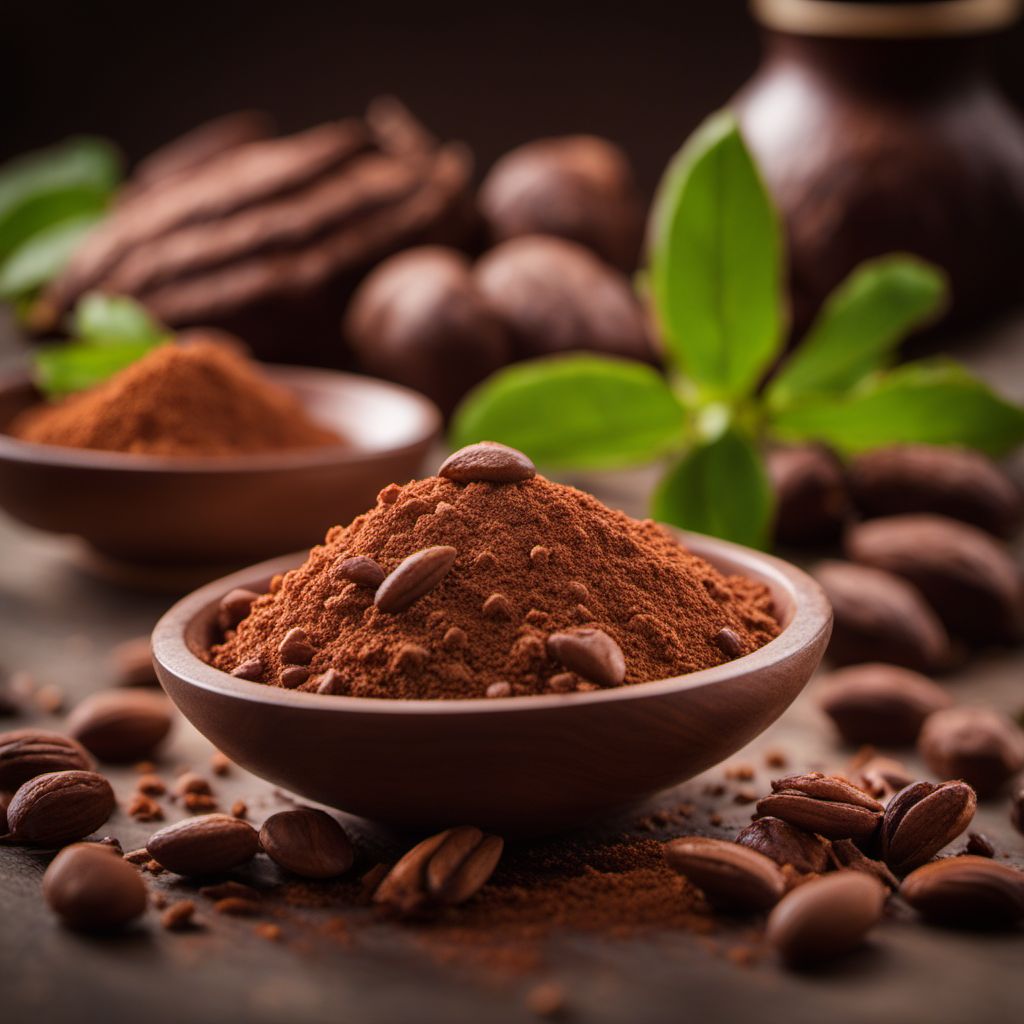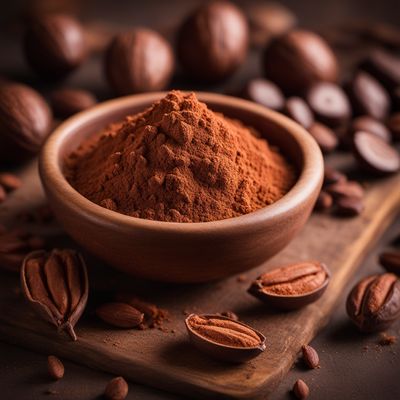
Ingredient
Cocoa ingredients (RPC derivatives)
Unveiling the Magic of RPC Derivatives: Exploring the Diverse World of Cocoa Ingredients
Cocoa ingredients derived from RPC derivatives are derived from the press cake left after cocoa butter extraction. These ingredients come in various forms, including cocoa powder, cocoa nibs, and cocoa paste. With their distinct aroma, deep chocolatey taste, and velvety texture, they are a staple in both sweet and savory dishes. Cocoa powder is finely ground and has a smooth texture, while cocoa nibs are small pieces of roasted cocoa beans with a crunchy texture. Cocoa paste, on the other hand, is a thick, semi-solid substance that combines cocoa solids and cocoa butter. These cocoa ingredients are the building blocks of delectable desserts, indulgent beverages, and savory dishes, making them a must-have in any culinary arsenal.
Origins and history
Cocoa has a rich history dating back to ancient Mesoamerican civilizations, where it was considered a sacred ingredient. The Mayans and Aztecs revered cocoa for its medicinal and ceremonial purposes. It was later introduced to Europe by Spanish explorers in the 16th century, and its popularity spread rapidly. Today, cocoa is cultivated in various regions around the world, including West Africa, South America, and Southeast Asia.
Nutritional information
Cocoa ingredients are a good source of antioxidants, fiber, and minerals such as iron, magnesium, and zinc. They are also relatively low in calories, with cocoa powder containing approximately 12 calories per tablespoon.
Allergens
Cocoa ingredients may contain traces of nuts and dairy, making them a potential allergen for individuals with nut or dairy allergies.
How to select
When selecting cocoa ingredients, look for high-quality products that are rich in cocoa flavor and have a deep, dark color. Opt for brands that use sustainable and ethically sourced cocoa beans. Check the packaging for any additional certifications, such as Fair Trade or organic.
Storage recommendations
To maintain the freshness and quality of cocoa ingredients, store them in a cool, dry place away from direct sunlight. Keep them in airtight containers to prevent moisture absorption and flavor loss. Cocoa powder and cocoa nibs can be stored for up to two years, while cocoa paste should be used within a few months.
How to produce
Producing cocoa ingredients from RPC derivatives is a complex process that involves grinding the press cake into a fine powder for cocoa powder, roasting and crushing cocoa beans for cocoa nibs, and combining cocoa solids and cocoa butter for cocoa paste. This process is best left to professional manufacturers.
Preparation tips
Cocoa ingredients can be used in a multitude of ways. Cocoa powder is perfect for baking, hot chocolate, and dusting desserts. Cocoa nibs add a delightful crunch to baked goods, trail mixes, and ice cream. Cocoa paste is ideal for making ganache, truffles, and chocolate sauces. When using cocoa powder, sift it before adding to recipes to ensure a smooth texture. To enhance the flavor, consider blooming cocoa powder in hot liquid before incorporating it into your recipe.
Substitutions
Unsweetened dark chocolate can be used as a substitute for cocoa ingredients. Simply melt the chocolate and adjust the sweetness in the recipe accordingly. However, the texture and flavor may differ slightly.
Culinary uses
Cocoa ingredients are a staple in desserts such as cakes, cookies, brownies, and truffles. They are also used in beverages like hot chocolate, mochas, and chocolate milkshakes. In savory dishes, cocoa powder can be used to add depth to chili, mole sauces, and spice rubs for meats. Cocoa nibs can be sprinkled over salads, incorporated into granola bars, or used as a topping for ice cream.
Availability
Cocoa ingredients are commonly available worldwide, with major cocoa-producing regions including West Africa (Ghana, Ivory Coast), South America (Brazil, Ecuador), and Southeast Asia (Indonesia, Malaysia).

